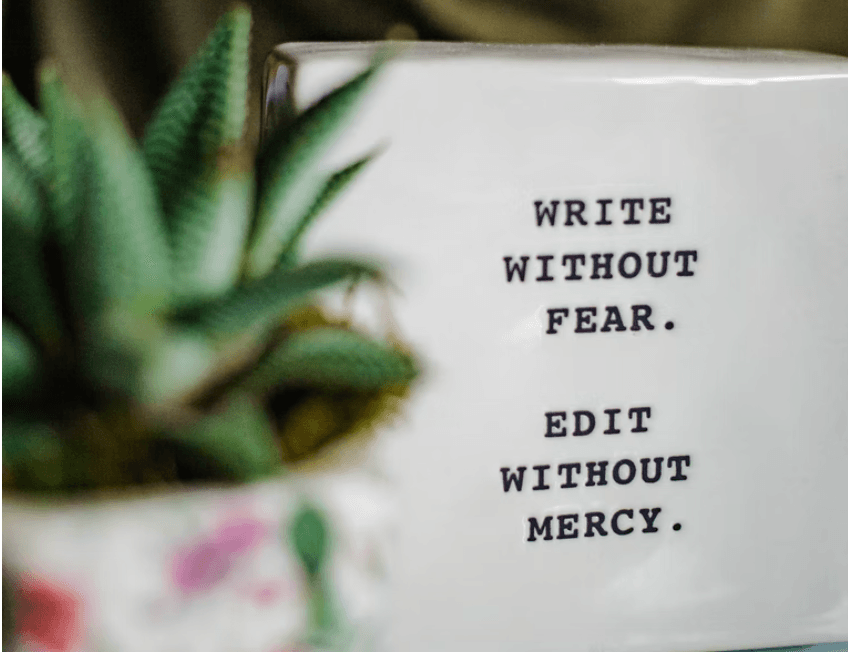The Trick That Changed How I Write

About a year ago, I was officially diagnosed with Chronic Intractable Migraine after about eight months of various doctors, tests, and medicine. In layman’s terms, it means that I constantly have a headache. All-day. Every day.
This has dramatically affected how I write. Honestly, there are days when I hate it. Long gone are the times when I could plop into my desk chair and write for hours on end and crank out thousands of words at a time.
Brian fog has killed that.

One of the biggest challenges I’ve had to overcome as a writer is finding a way to bring my productivity back to around my former levels. Everything I tried had little to no success. Then NaNoWriMo came around and I accidentally stumbled upon a trick that changed the game for me forever.
I discovered Word Sprints.
Before, I’d tried them to various degrees of success. But this time around, it changed the game for me.
In case you haven’t tried them before, let me tell you a little bit about Sprints. The basic idea is that you set a timer and you write for a set amount of time. With a timer on your mind, your inner editor is a bit quieter as you seek to push yourself to crank out as many words before time runs out.
Over the course of this article, I want to share with you some tips, tricks, and tools to help you use Word Sprints in your writing process. Now, while I discovered this trick working on a novel, I have also tried it out with creative nonfiction and screenwriting as well. I’ve had to tweak it slightly depending on what I’m working on.

1. Tools
Let me equip you to use Sprints before I share the tricks of the trade with you.
My favorite tool for this is the Sprinto Bot on Discord. The NaNoWriMo server for my region uses it for nightly sprints as part of our remote initiative during COVID. Even through the rest of the year, you’ll catch someone in the Sprint part of the server running solo or with a couple of people.
Sprinto is very easy to use, especially if you’re familiar with Discord. As I mentioned above, you can use it by yourself or with friends. It requires a server instead of a single chat which means it’s most useful either in a server with writing friends or in a group similar to a NaNoWriMo one.
You write in your existing document; you enter your totals in Discord at the beginning and end of each Sprint. It even gives you a Words Per Minute calculation as it tallies the results!
Words Sprints with Dabble is another tool. If you caught my Stage 32 article about Writing Tools, you’ll recognize the name Dabble from there. I’ve been using this software for quite some time and discovered that they offer a free word sprinting tool.
The one thing I will note about this is that you type into their browser tool as you sprint. Upon the completion of your sprint, you will need to copy and paste your work to your regular document as it will only save for 24 hours. One benefit is that it allows you a faux empty page. Some argue that the blank slate of that empty page instills more creativity. You aren’t bogged down in a document that can span from dozens to hundreds of pages.
One last digital tool I’ll nod to is the official NaNoWriMo Word Sprints Twitter. During the month of November, they run Sprints regularly. They also provide prompts at times to help get the creative juices flowing (and to help us brave souls attempt the run to 50K in 30 days).

2. Tips and Tricks
Now, a few years ago, I read a book called 2k to 10k: Writing Faster, Writing Better, and Writing More of What You Love by Rachel Aaron. As a whole, I’ve adapted a version of her method into my own writing. I think this helps build a foundation that is invaluable to successfully incorporate sprints into your writing.
Honestly, I could do a whole post about how this method has helped my writing over the years. But for the sake of this post, let’s talk about the brief version. I strongly recommend checking out the full book.
Outline the next chapter or two (or scene or two for screenwriters) so that you know where you’re going. Point A is where you’re starting and you want to get to Point B by the end of your writing time.
By having an outline, you take a lot of the guesswork out of what you’re writing which allows you to move faster in your active writing time.
One of the most important tricks is deciding the best amount of time for each Sprint. I’ve discovered for me the sweet spot is 20 minutes to a half-hour at a time. Anything more than that and my mind is inclined to wander.
There are sites and articles that recommend going longer. But my advice on this subject is to go the length that best works for you. Or, go the length you have time for in a day. I’ve used Sprints as a tool to maximize the very short window I have to write in a day to make sure I maximize my output.

Now, let me add one more layer to this for you. And trust me, this can be a game-changer.
Find friends to Sprint with you.
I am super competitive. Sometimes, I forget just how deep that runs. But when I have at least one other person who’s sprinting alongside me, words fly onto the page. I want to win the Sprint. And yes, I’m aware that the purpose of it is to encourage us to write.
But winning is also fun.
For me, there’s a dual benefit. I can utilize my competitive streak, and enjoy the accountability of having a writing partner. There’s something about having someone writing alongside you, sprints or not.
Sometimes, I only have time for one sprint. Other days, I will chain 2-4 together and write over the course of several hours. If I do multiple sprints, I’ll put a few minutes in between each one. My mind can wander, or I can check my phone, brew more tea, or take care of a quick chore.
Rediscovering word sprints has drastically changed how I write. It’s given me a way to keep my output up while dealing with my own disability. Hopefully, whether you write books, articles, or screenplays, you can use this trick to help you write as well.
Resource links referenced in this article:
Words Sprints with Dabble
NaNoWriMo Word Sprints Twitter
Book: 2k to 10k: Writing Faster, Writing Better, and Writing More of What You Love
About the Author

Mary Helen Norris
Author, Editor, Marketing/PR, Screenwriter
M.H. Norris most recently launched her mystery series, All The Petty Myths, which combines forensics and mythology. The first volume featured the premiere story “Midnight,” which won #2 Best Mystery Novel in the 2018 Preditors and Editors Readers’ Poll. Other stories in the collection took home #1 S...





